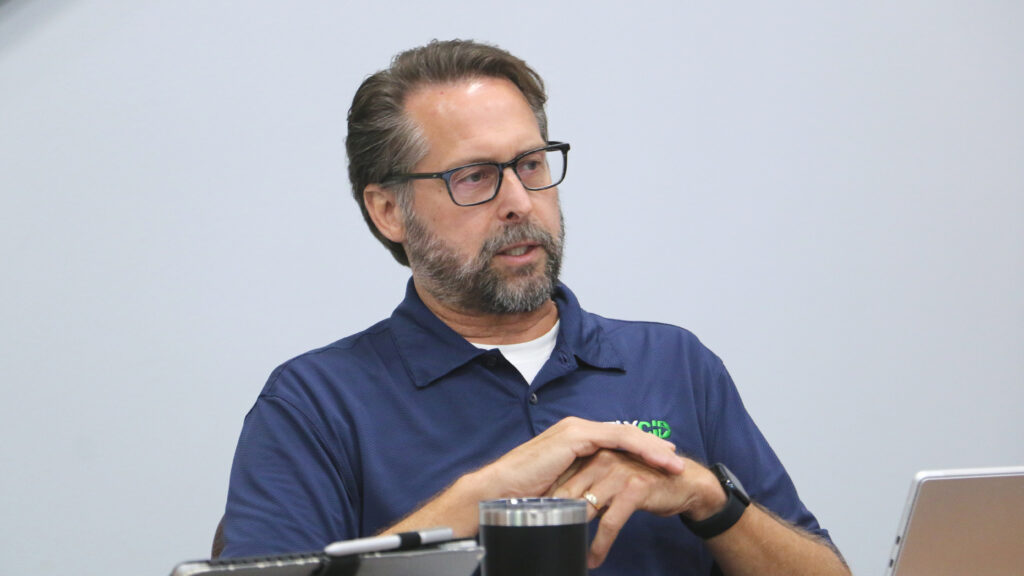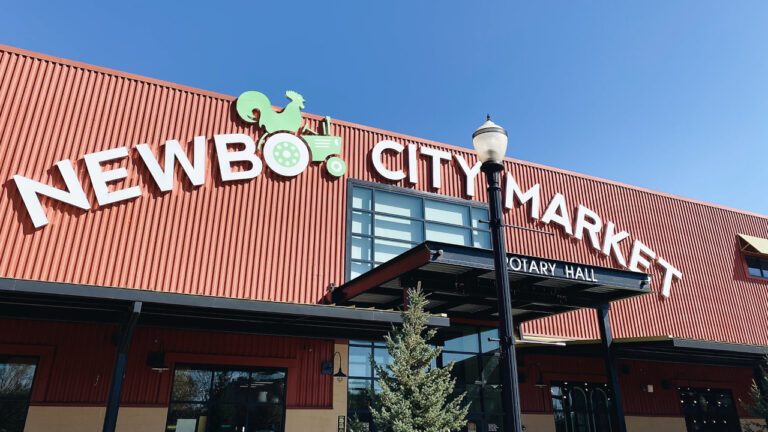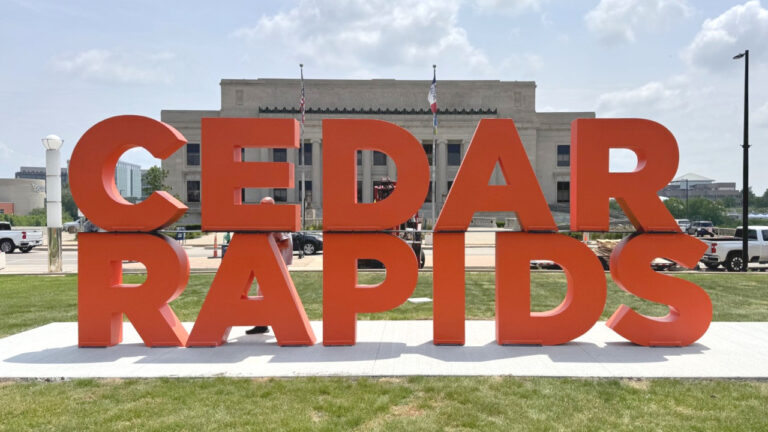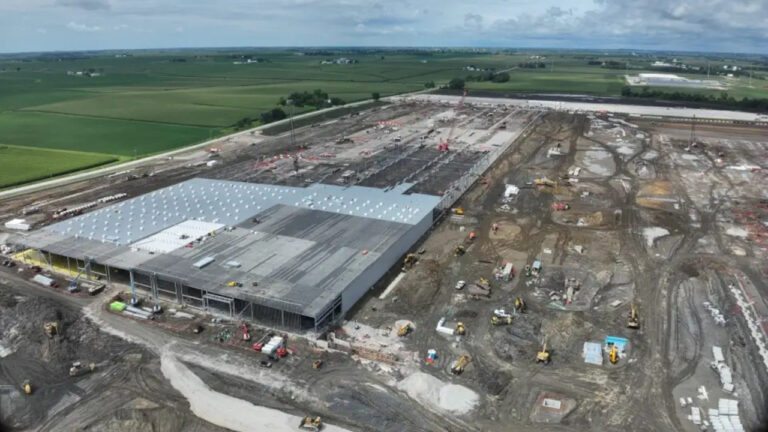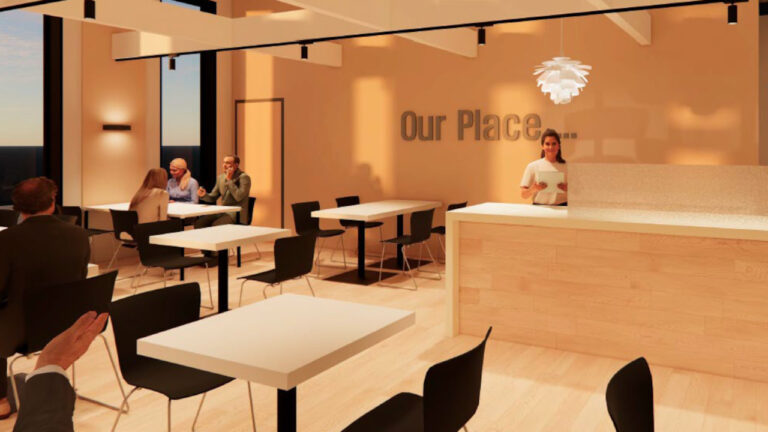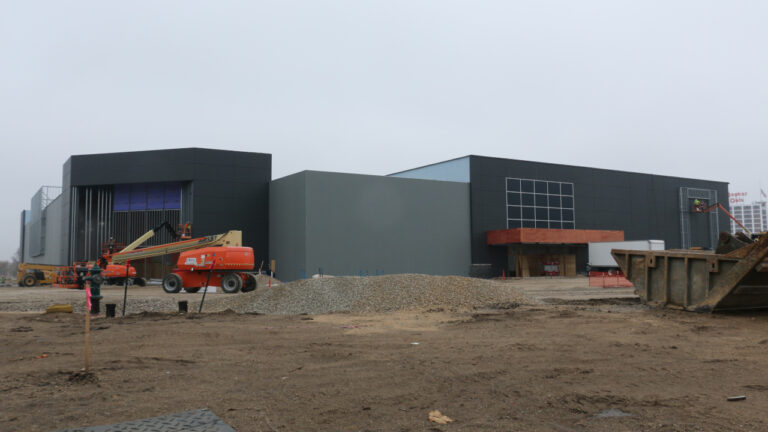The Cedar Rapids Airport Commission and Alliant Energy representatives shared starkly different perspectives Tuesday morning at a meeting to discuss Alliant’s proposal to site a new natural gas-fired power plant just a few miles west of the Eastern Iowa Airport.
The special commission meeting was called last week to gather more input on the proposal from Alliant representatives, several of whom attended the meeting and responded to questions from commission members.
Other meeting attendees provided input on the proposal, as well as written objections from a number of pilots who fly into and out of the Eastern Iowa Airport.
Proposal details
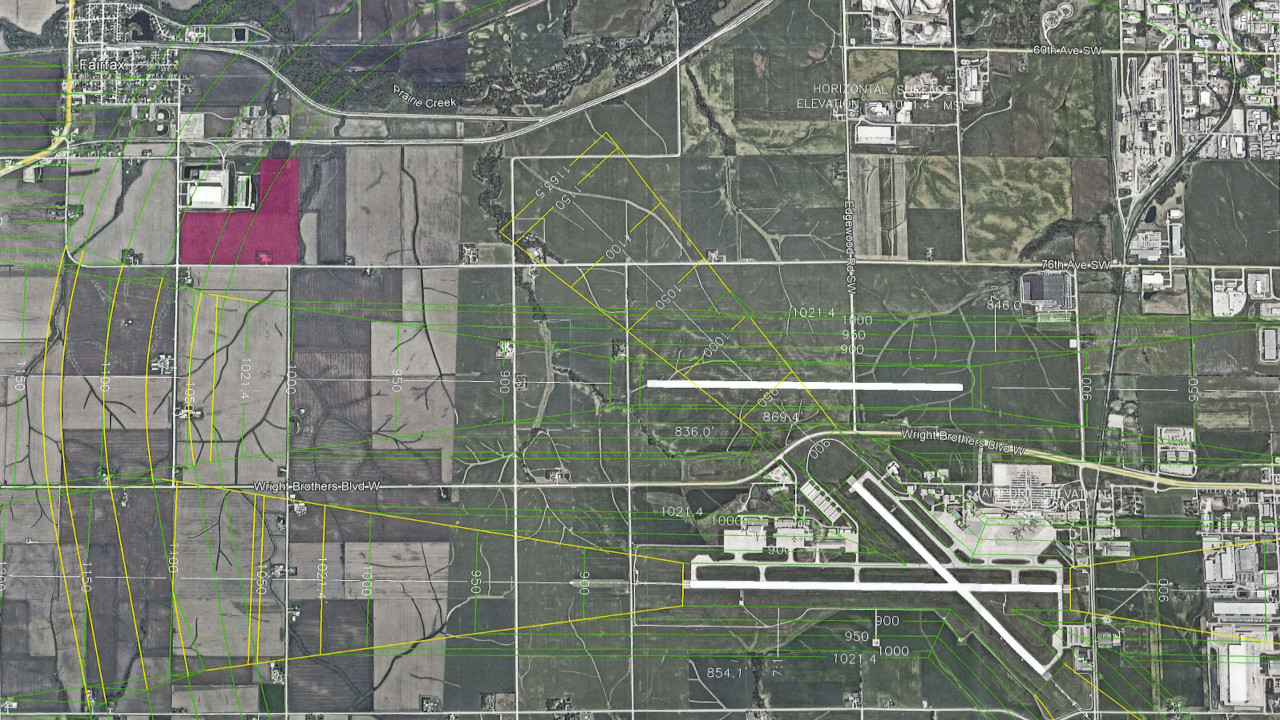
The current proposal, first unveiled by Alliant in a meeting with airport officials June 18, involves construction of a power plant with two natural gas combustion turbines and two condensing stacks, each estimated to rise 190 feet to 250 feet above ground level.
The plant would be located near the southeast side of Fairfax, near the Travero Logistics firm and just northwest of the airport. Officials say that location raises several safety and logistical concerns with airport operations.
“These stacks will create a vertical obstruction in a critical approach to departure airspace,” Mr. Lenss reiterated Tuesday. “The stacks will create heated exhaust plumes that will create additional hazards such as fog. Siting a power plant at the proposed location is not compatible with the current and future operations, and the airport is asking that the site be removed from further consideration and an alternative site be found. The airport is ready to assist and work with Alliant to determine alternative sites that would be compatible with airport operations.”
Mr. Lenss further clarified the airport’s concerns with the proposed plant’s distance from current and future runways.
“That location would be about four miles from the west end of our main runway, less than three miles from the northwest end of runway 13/31, otherwise called our secondary runway, and it would also be less than a mile from the west end of the future third runway, which has been in our plans as an airport for decades, and the planning and land acquisition goes back over 50 years,” Mr. Lenss said.
Mr. Lenss also clarified that contrary to popular belief, the Federal Aviation Administration (FAA) will not approve or disapprove the Alliant proposal.
“Local communities must decide local land use issues, and the FAA will hold the airport accountable via grant assurances, should the airport and the community make poor decisions and not protect the federal investment in the airport through compatible land use protections, the FAA may take action via our federal grant program,” he said. “It is incumbent on all of us in this room to work together at the local level, to do the right thing.”
Discussion between Alliant representatives, airport commissioners
When questioned by commission member Barry Boyer, Alliant officials confirmed that they own the land being considered for the new plant.
Commission member Clayton Parks asked Alliant officials why, although alternative sites were considered, only the site near Fairfax was presented to airport officials as a proposed location, and why the alternative sites haven’t been publicly identified.
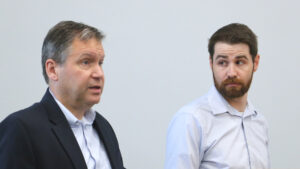
“When we look at siting, we look at a number of things,” said Dave Herkert, Alliant’s director of strategic projects. “Among those, particularly for a gas plant, is transmission, availability, gas supply, some environmental factors, availability of water and water treatment. So we’ve evaluated a number of sites relative to that, and we continue to evaluate sites relative to those criteria. And then we also consider, obviously, the cost associated with a site, to ensure that we’re looking out for customer affordability.
“In terms of alternative sites that we’re looking at, we’re not going to go into specific details,” he added, “because, as you can imagine, as we are identifying and evaluating those sites, we need to be able to negotiate with landowners, and if we identify those sites, it can put us in a negative position from a cost perspective, but we’re open to having those discussions as we go forward.”
Alliant officials also said that, while they originally planned to present a formal proposal to the Iowa Utilities Commission in October, that time frame “remains fluid.”
“We’re still evaluating, so we have not made a final decision to present this site,” Mr. Herkert said. “The October date was a target date that we put out there that is flexible. That’s where I think we can engage in conversations, review some of the alternatives and get to a more firm timeline.”
Mr. Herkert outlined the timeline for the proposed plant – about a year to complete the regulatory process, including permitting and zoning, and about three years for construction thereafter.
Both Alliant and the airport are commissioning studies to evaluate the feasibility, and the potential concerns, with siting the plant at its proposed location. Both studies are expected to be completed in the coming weeks.
But commission chair Robin Therme said that while those studies will provide some valuable insight, the commission’s opposition to the current proposal won’t change.
“I think it’s clear that regardless of (the studies), we’re still going to be opposed to the site,” Ms. Therme said. “What we’re saying is we only want to talk about the alternative sites. The studies aren’t going to matter as far as us reaching our position.”
Mr. Boyer engaged in a tense discussion with Mr. Herkert regarding Alliant’s timeline for publicly announcing the proposal.
“We were notified June 18, and it’s my understanding you’re going to the Utilities (Commission) in October,” Mr. Boyer said to Mr. Herkert. “When did this plan begin? When did you start looking at this site and saying, you know, this would be a darn good place to put a power plant?”
“We were really in the very early stages when we brought all of our stakeholders in,” Mr. Herkert responded. “We brought the airport in … as soon as we had the idea of (proposing) the site.”
“So you had not talked to Fairfax before that?” Mr. Boyer asked.
“We reached out to all our stakeholders at the exact same time,” Mr. Herkert said.
“Really?” Mr. Boyer said.
The conversation continued, with the two men exchanging views on the timeline of the project’s announcement.
“We feel blindsided by this,” Mr. Boyer concluded. “You know, you talk about collaboration and communication. It doesn’t feel like that from our side. I’m just being as candid as I can be here, because all of a sudden this comes up, and we’ve got three months. I feel like you checked us against the glass on this deal, and that’s not the way partners treat each other. And now you’ve put us in a position to go full gear against it.”
“We hear you, and we’ve received that feedback,” Mr. Herkert said. “This is a long process to site and build a public land. It’s a four to five year process. So we try to reach out to our stakeholders when we have something certain that we feel like we’re confident that we can move forward with, and that’s what we did here. We understand your concerns, we’re listening, and we’ve indicated that we’re open to having additional discussions with you and also discussing alternative sites. So we appreciate the feedback. We appreciate the partnership that we’ve had with the Commission and the airport over the years, and we do want to continue that strong relationship.”
Commission member Duane Smith said he was most disappointed with the “information flow” from Alliant on their proposal.
“We’ve invested hundreds of millions of dollars in our terminal,” he said. “We’ve helped develop educational programs with Coe and Kirkwood. We have a study coming out (on future economic potential). We’re working with regional leaders that are looking at the airport as the main economic driver, not just for Cedar Rapids and Fairfax, but with a regional focus in mind.”
He noted that Cedar Rapids was one of three finalists for the “Atlas project” a proposed development – ultimately awarded to another city – for an aircraft construction facility that would have brought 14,000 employees to the region and a “billion-plus” in investments.
“Probably one of the byproducts that we developed through the Atlas project is a relationship with the state of Iowa,” Mr. Smith said. “We don’t want to stand in the way of your continued success and development of energy for the region. But I see this as dragging on, and so I’d like to discuss short term, what do we do for collaboration and information flow on this issue, but probably more importantly, longer term, to avoid this type of misunderstanding in the future and really develop a common focus and structure?”
Mr. Herkert said despite the current differences, Alliant agrees with that assessment.
“I think we share that vision, and we don’t want to stand in the way of the airport,” he said. “We have a common goal for economic growth and the benefit of the community. We’re certainly open to having additional discussions regarding the project, between our engineering and your engineering studies, to make sure inputs, assumptions, outputs, are compared. We’re definitely open to discussing how to do that.”
Public comments focus on ‘alignment,’ economic development
During public comments, commissioners heard from Fairfax zoning administrator Chris Phillips and Fairfax mayor Joanne Beer, as well as longtime Eastern Iowa Airport flight instructor Tim Busch and former airport commission member Pat Baird.
Mr. Phillips said he wanted to make sure Fairfax’s perspective on the project was taken into account, and advocated for the convening of an ad hoc Airport Zoning Board of Adjustment, with representatives from both Fairfax and Cedar Rapids, to evaluate the proposal.
“In our eyes, we want to hear out the proposal,” Mr. Phillips said, noting that Fairfax officials haven’t yet taken a formal stance. “We want to see the economic development available in Fairfax … this impacts our community more than any place else, so our council will be the ones to make the decision on whether they want to site in Fairfax or not. We don’t feel that this site should be removed from conversation at all at this time. We ask that you let us continue the conversation, not impede economic development in Fairfax.”
Mr. Baird said, during his time as an airport commissioner, another major development project was proposed near the airport that “would have relied on the possibility of a (new) north runway.”
He also said projects like Alliant’s could lead the airport to become “landlocked,” similar to situations in Des Moines and Chicago, hindering future development.
“I hear very nice words from both sides, words like alignment, that are being used, but I haven’t seen any example of alignment, at least up until this point when, really, when both Allliant and the airport should be in alignment on potential for economic development. It’s almost a little embarrassing to have this meeting and find out that we’re just starting conversations and Alliant planning to meet with the Utility Commission in October. It is the (airport) commission’s responsibility to protect the airport from being landlocked. For just this example, it sounds like the construction of a power plant there is a form of being landlocked. So I think the commission has no choice but to fight against that location.”
‘More to talk about’
After the meeting, Mr. Lenss reiterated the airport’s strong opposition to the proposed plant, but noted he remains receptive to further discussions with Alliant.
“I think there’s a lot more to talk about,” he said. “But if we’re looking for a win-win, I think the alternative site discussion is where that’s located. And I’m optimistic that we can put our energy and studies towards that. We received several letters from pilots, corporate pilots, that operate in and out of here that have opinions about this. I think their opinion should carry some interest for all of us. We’ve got more to go and more conversations. And I look forward to that.”
Mr, Lenss also referenced the study that’s been commissioned by the airport to evaluate the Alliant proposal, particularly in terms of impacts to potential airport expansion and related development projects in the area.
“We’re spending nearly $70,000 of airport cash today to study this, and I think we would be better off, from an airport perspective, to spend that $70,000 working collaboratively with Alliant to find a site that has no negative impact to the airport,” he said. “This is a challenge in economic development. In some respects for all of us, it’s growing pains. (There’s) tremendous pressure on land use out here by the airport because of growth and economic benefit to the region. Those are all very good things. As we are hitting these growing pains, we just need to find those solutions that work for everybody – the city of Fairfax, Alliant Energy, the airport. In some respects, with the pressure we’ve had out here on land use, this was bound to happen at some point where we have these – I call it a kerfuffle. I think we can get through it. I think we’re adults. It’s a matter of conversation. We’re going to have passion on (all) sides. That’s good. And I think through that, we’ll find a reasonable outcome.”
Alliant Energy also provided a written statement on the proposal after Tuesday’s meeting:
“We are in the early stages of evaluating potential sites for a combined-cycle natural gas facility in the Cedar Rapids region. To ensure a cost-effective, reliable solution for our customers, we are assessing several locations – including a site currently owned by Alliant Energy.
“Additional generation capacity is essential to meet growing energy needs and support the economic growth of the communities we serve. This project reflects our continued commitment to an all-of-the-above energy strategy that meets customer demand while maintaining reliability.
“We value the insights shared by the Eastern Iowa Airport and the cities of Cedar Rapids and Fairfax and remain dedicated to achieving the best possible outcome for the region.”


